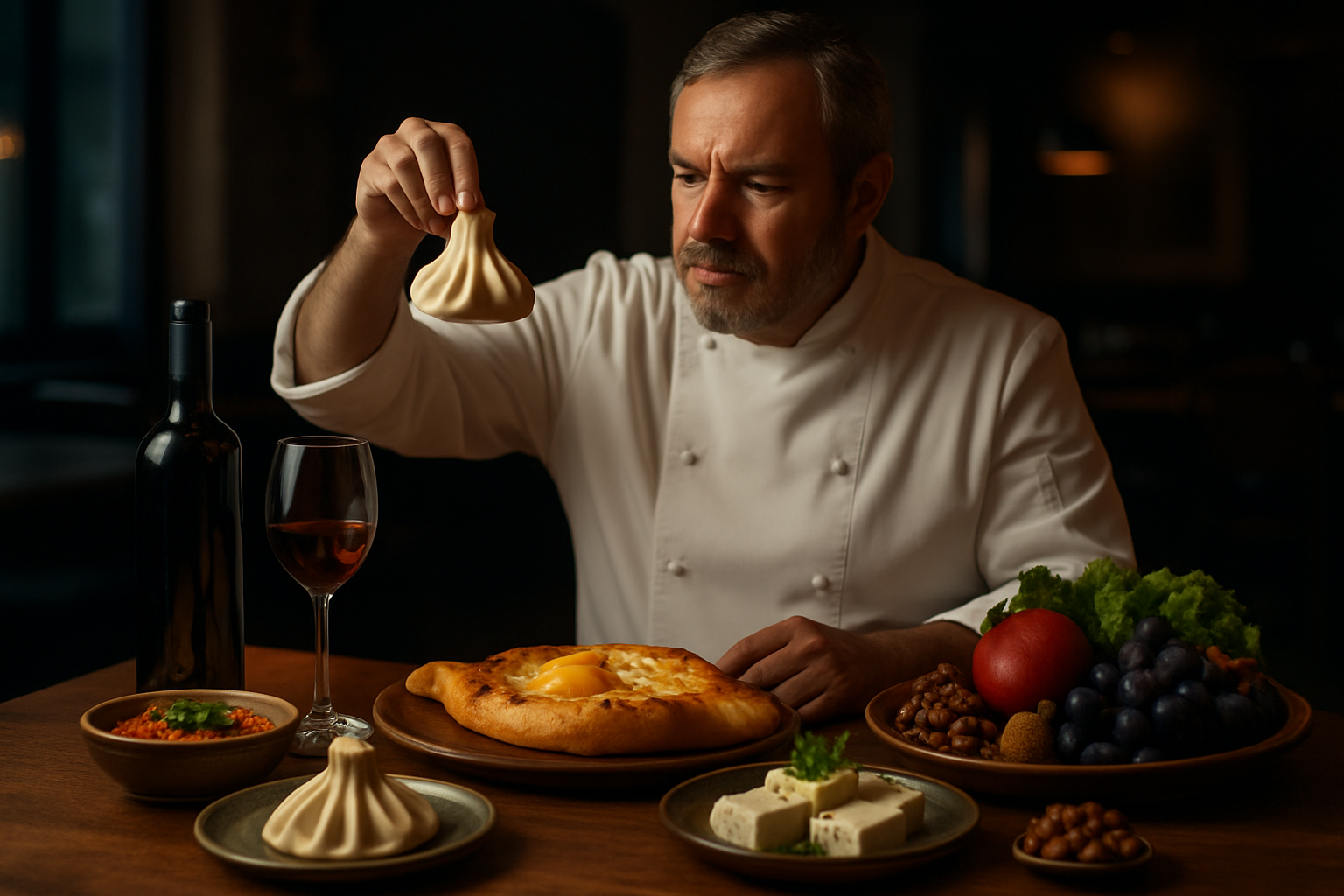Culinary Alchemy: The Art of Flavor Pairing
Unlock the secrets of extraordinary taste combinations and elevate your cooking game. Flavor pairing is the hidden magic behind unforgettable dishes, transforming ordinary ingredients into culinary masterpieces. Join us on a journey through the science and art of matching flavors, and discover how to create mind-blowing taste experiences in your own kitchen.

The science of flavor pairing also involves considering the five basic tastes: sweet, salty, sour, bitter, and umami. By balancing these tastes, we can create depth and complexity in our dishes. For instance, adding a touch of salt to a sweet dessert can enhance its overall flavor profile, while a squeeze of lemon juice can brighten a rich, savory dish. This interplay of tastes stimulates our taste buds and creates a more satisfying eating experience.
Moreover, our sense of smell plays a crucial role in flavor perception. Aromatic compounds in foods can either complement or contrast with one another, creating unique flavor experiences. This is why wines are often paired with specific dishes based on their aromatic profiles. By considering both taste and aroma, we can create truly memorable flavor combinations that engage multiple senses.
Unexpected Pairings That Work
While traditional flavor combinations will always have their place, exploring unexpected pairings can lead to exciting culinary discoveries. One such surprising duo is watermelon and feta cheese. The sweet, juicy watermelon contrasts beautifully with the salty, tangy feta, creating a refreshing and balanced dish perfect for summer.
Another unconventional pairing is chocolate and avocado. The rich, creamy texture of avocado complements the deep, complex flavors of chocolate, resulting in decadent desserts that are both indulgent and nutritious. This combination has gained popularity in vegan baking, where avocado often replaces butter or eggs.
For a savory twist, consider pairing blue cheese with honey. The sharp, pungent flavors of blue cheese are mellowed by the sweet, floral notes of honey, creating a sophisticated taste experience. This combination works well in salads, on cheese boards, or even as a unique pizza topping.
Exploring these unexpected pairings not only expands our culinary horizons but also challenges our preconceived notions about what flavors work together. By embracing these unconventional combinations, we open ourselves up to a world of new taste experiences.
Cultural Influences on Flavor Pairing
Flavor pairing isn’t just about science; it’s deeply rooted in cultural traditions and regional cuisines. Different cultures have developed unique flavor combinations over centuries, reflecting their local ingredients, climates, and culinary philosophies. By exploring these cultural pairings, we can gain inspiration for our own culinary creations.
In Mexican cuisine, for example, the combination of chocolate and chili peppers has been used for thousands of years. This pairing balances the rich, bitter notes of cocoa with the heat and complexity of chili peppers, creating depth in both sweet and savory dishes. The popular mole sauce is a perfect example of this flavor harmony.
Asian cuisines often pair sweet and savory flavors in ways that might seem unusual to Western palates. In Thai cooking, palm sugar is frequently used alongside fish sauce, creating a balance of sweet and umami flavors. Similarly, Japanese cuisine combines sweet mirin (rice wine) with salty soy sauce to create a versatile flavor base for many dishes.
Mediterranean cuisine showcases the pairing of fruit with savory ingredients. Figs with prosciutto, oranges in salads with olives, and apricots in tagines are all examples of how fruit can add complexity and balance to savory dishes. These cultural pairings demonstrate how flavors can work together in harmony, even when they seem contradictory at first glance.
Techniques for Successful Flavor Pairing
Mastering the art of flavor pairing requires practice, experimentation, and a willingness to think outside the box. Here are some techniques to help you create successful flavor combinations in your own kitchen:
-
Start with a flavor profile wheel: This visual tool organizes flavors into categories and shows which ones complement each other. It’s an excellent starting point for exploring new combinations.
-
Use the bridge ingredient method: Find an ingredient that shares flavor compounds with two seemingly unrelated foods. For example, coffee can bridge the gap between beef and blueberries, creating an unexpected but delicious combination.
-
Balance intensity levels: Pair strong flavors with other strong flavors, and subtle flavors with subtle ones. This ensures that no single taste overpowers the others.
-
Consider texture: While not directly related to flavor, texture plays a crucial role in how we perceive taste. Combining contrasting textures can enhance the overall eating experience.
-
Trust your palate: While science and cultural traditions can guide us, personal preference plays a significant role in flavor pairing. Don’t be afraid to trust your instincts and experiment with combinations that appeal to you.
Tips for Flavor Pairing Success
• Start with high-quality, fresh ingredients for the best flavor results
• Keep a flavor journal to record successful (and unsuccessful) pairings
• Experiment with small quantities before committing to large dishes
• Consider the cooking method and how it affects flavors
• Use herbs and spices to bridge gaps between seemingly incompatible ingredients
• Don’t forget about beverages – they can complement or contrast with food flavors
• Learn from professional chefs and their innovative flavor combinations
• Be open to trying new and unfamiliar ingredients
Flavor pairing is a journey of discovery that can transform your approach to cooking and eating. By understanding the science behind flavor combinations, exploring unexpected pairings, drawing inspiration from cultural traditions, and applying proven techniques, you can create dishes that surprise and delight the palate. Remember, the world of flavors is vast and ever-expanding – there’s always something new to taste and explore. So, embrace your culinary creativity, trust your instincts, and let the art of flavor pairing guide you to new culinary heights.





